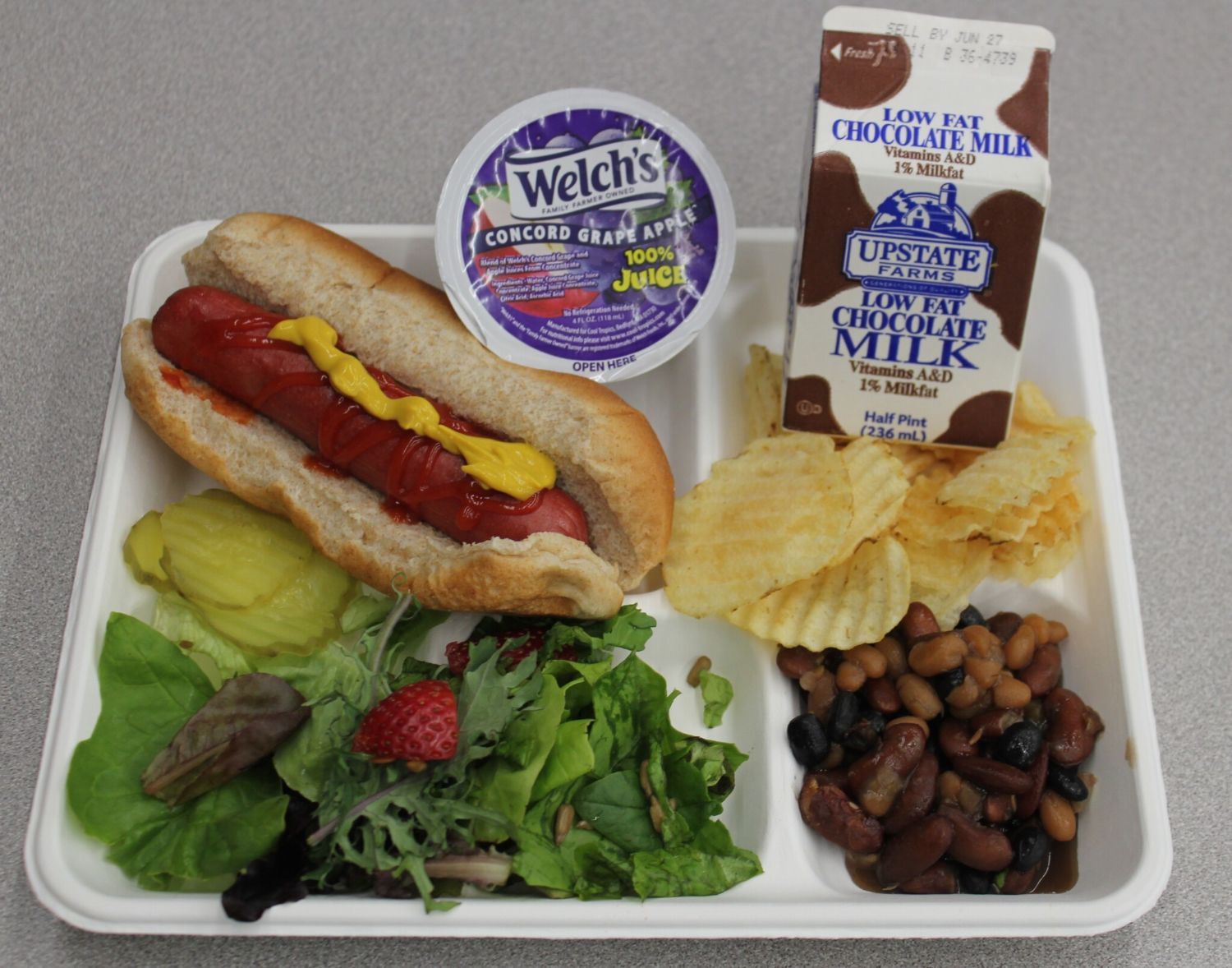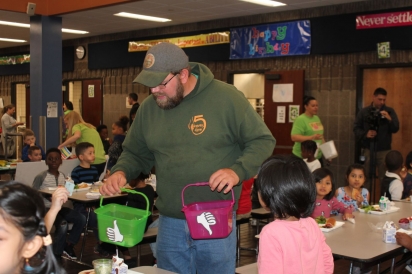Buffalo Public Schools' Homegrown School Lunches
For students in Buffalo Public Schools, the key to a healthier future is eating a school lunch today. And it’s not what you might expect. This school lunch has farm-fresh produce, a healthier-option protein and plenty of New York state pride in every bite.
In the perfect (and required by regulation) school lunch, every child must be offered fruit, a vegetable, two ounces of protein, an item that is 51 percent whole grain (bread, pasta or brown rice) and a half-pint of milk. Sounds simple, but there are challenges in feeding a diverse population where a high percentage of students may not have the opportunity to eat wholesome food.
In 2014, the district piloted a program to help its students eat better in 12 schools with support from a USDA Farm to School Planning Grant. The program launched in 2016 and feeds close to 40,000 students in 66 schools.
Encouraging kids to try something new and different—and healthier—can be a challenge, so Brigid O’Brien Wood, food service director for the district, and her team have employed some motivational strategies. “We came up with the Harvest of the Month and Taste Test Thursday,” O’Brien Wood explains. “We recruited anyone in the school community for their input and worked with the Cornell Cooperative Extension, Massachusetts Avenue Project and the Buffalo Niagara Medical Campus as our partners. We also worked with a chef who is a culinary academy graduate to find recipes that showcase food that kids like, and to provide quality meals that reflect the ethnicity and heritage of our students.”
Teachers and food service staff pitched in to help taste-test and evaluate new recipes. The most important consumers—the students— also participated, and exercised the power of the popular vote, with some assistance from students at D’Youville College. Students dropped ballots into buckets, giving new foods a thumbs up or down. Some schools during the pilot year were more challenging than others, particularly if students there weren’t accustomed to more wholesome foods, which is often the case in the urban core where access to fresh produce is less common. A reward system helped encourage voting. “Stickers were a surprising and big motivator," O'Brien Wood says. The bottom line was that students were trying foods new to them and were eager to lend their voices to a selection process. Foods like Brussels sprouts, kale and potatoes prepared without frying made their way onto cafeteria trays and into student bellies.
The key, O’Brien Wood says, is to keep the recipes simple and for the culinary teams to keep their expectations modest. They incorporate two new recipes per month and try to mix new options with familiar items. Things like whole-wheat pasta and brown rice—with more fiber and nutrients than the more familiar white options—were a tough sell at first. The culinary team also takes salsa—always a favorite—and blends it with brown rice to make Mexicali Rice, a colorful, flavorful side dish that kids gobble up. Nutrient-dense kale is well massaged to make it more tender and appealing and is then chopped, tossed with raisins and dressed with a lemon vinaigrette.
These innovations are labor intensive but well worth the extra efforts. “The kids love it and we’re helping the cafeteria staff make fresh foods more kid-friendly and easier to use,” says O’Brien Wood.
Fresher food is local food. New this school year is New York Thursday, a day where at least 30 percent of the food is grown or raised in the Empire State. New York–raised beef for hamburgers and sloppy joes will make it onto school menus. A healthier-option New York potato chip, Issa’s Flame Baked Pita Chips (made in Buffalo), and locally sourced maple syrup will be incorporated into meals for kids to wash down with a grape slushie. “We’re really excited about this,” says O’Brien Wood. There’s an additional benefit: Governor Andrew M. Cuomo is offering incentives to school districts for their participation.
This focus also creates opportunities for students to learn more about where their food comes from. Teachers are encouraged to incorporate farm tours into their planning or invite farmers in to speak to students.
Life lessons are likewise part of the program. Since almost every school has a salad bar, kids are taught how to use tongs, to take only what they want to eat and to not put their heads under the sneeze cover. Students also learn more about food systems and how agriculture feeds people and the economy. Kids additionally learn about the foods they’re
eating through posters and infographics on cafeteria tables.
While there are steep learning curves all around, O’Brien Wood says her team embraces them. “This was something we definitely needed to do to feed children and encourage them to make healthier food choices.”
A Healthier Hot Dog
Hot dogs top almost every kid’s favorite food list, but they can be nutritional nightmares. New this year for Buffalo Public School students is a locally produced Wardynski hot dog made with 51 percent New York–raised beef along with New York state–grown potatoes. The spud isn’t distinguishable: it merely takes the place of the usual fillers contained in most other low-cost protein products.
O’Brien Wood says that kids are finicky about acceptable tastes and textures. This hot dog passed the kid taste test and scores high on nutrition, too, particularly when it’s served on a whole-wheat bun. She adds, “We will work with the food industry to create better tasting products. We look where we are with nutritional guidelines, and we’re realistic. It’s not nutritional if it’s going in the garbage.”
This new hot dog has almost half the fat, 25 percent lower salt, and more protein and iron per serving than previously served tube steaks, and it contains no hydrolyzed beef stock or MSG. The result is a plump and juicy hot dog with the right mouthfeel and taste that you’d expect. “Our student population isn’t used to culinary cuisine,” says O’Brien Wood. “They’re used to fast food.”








